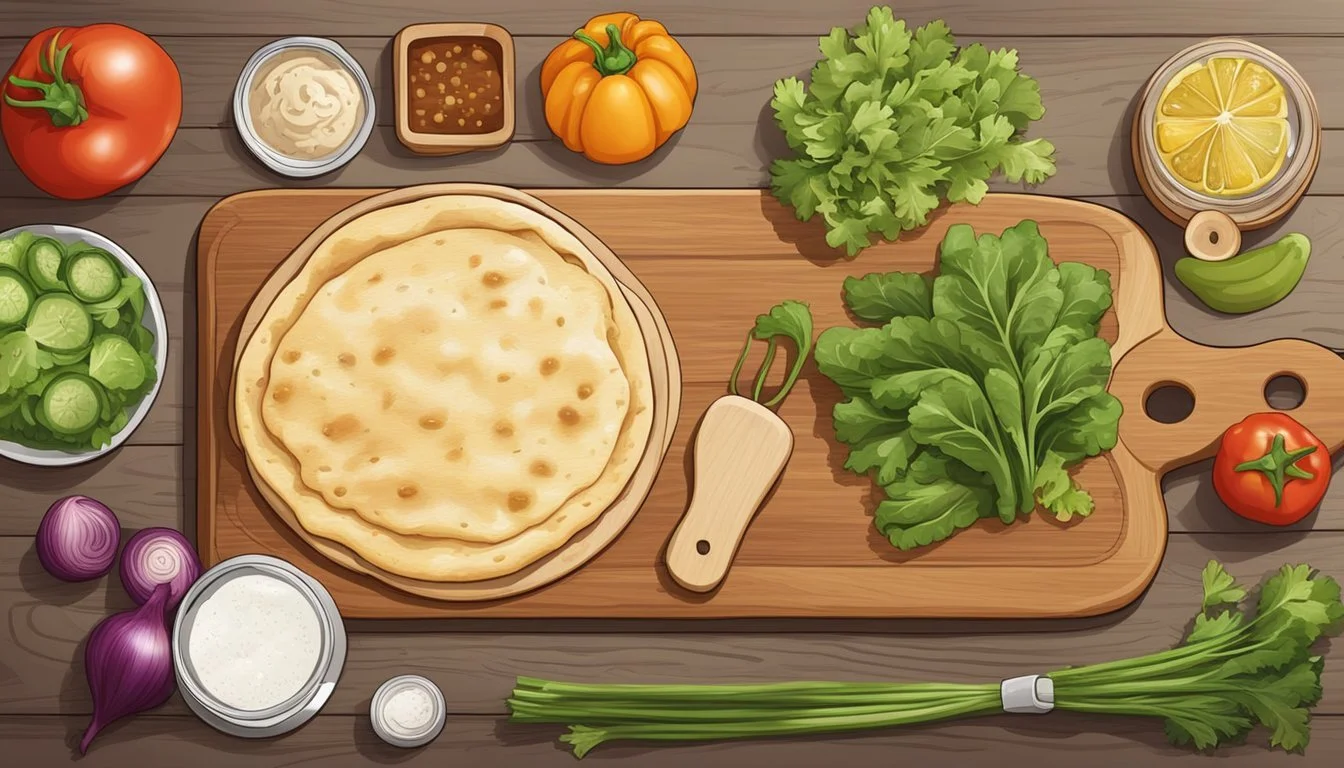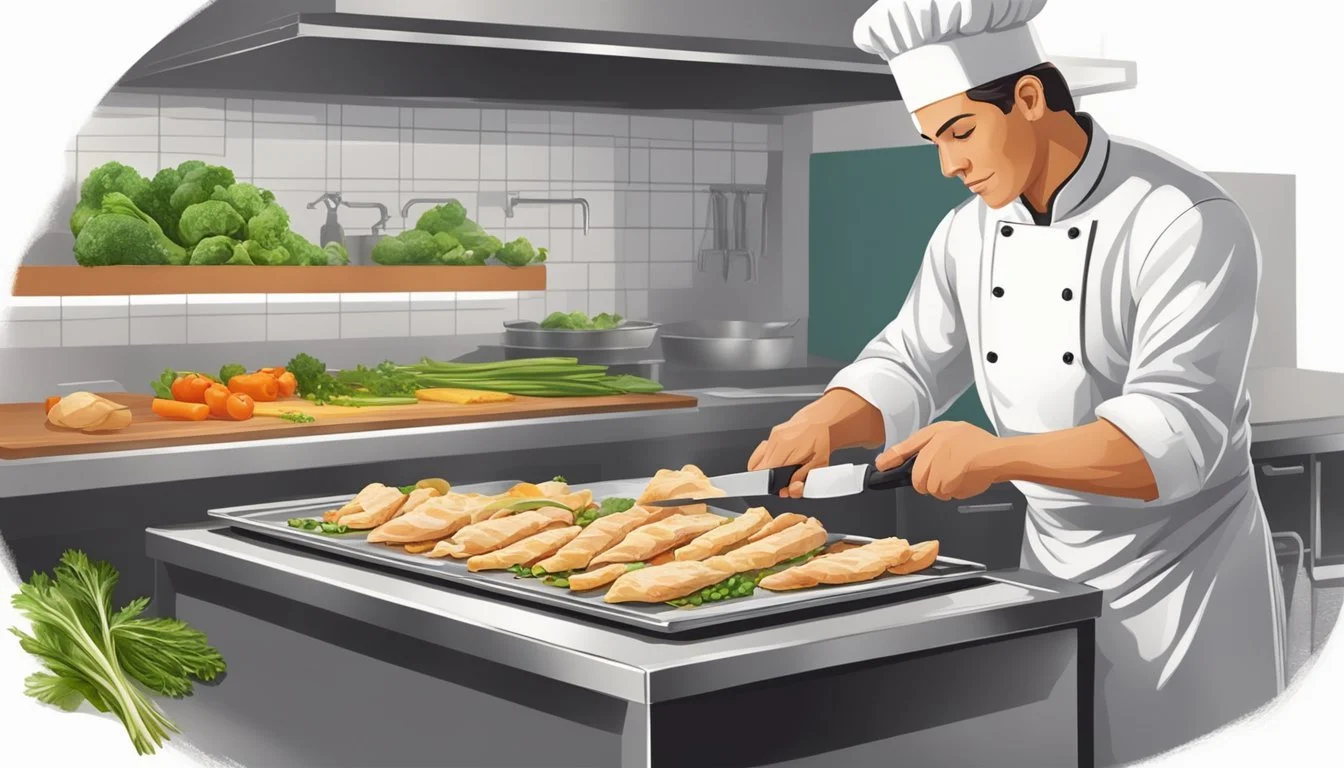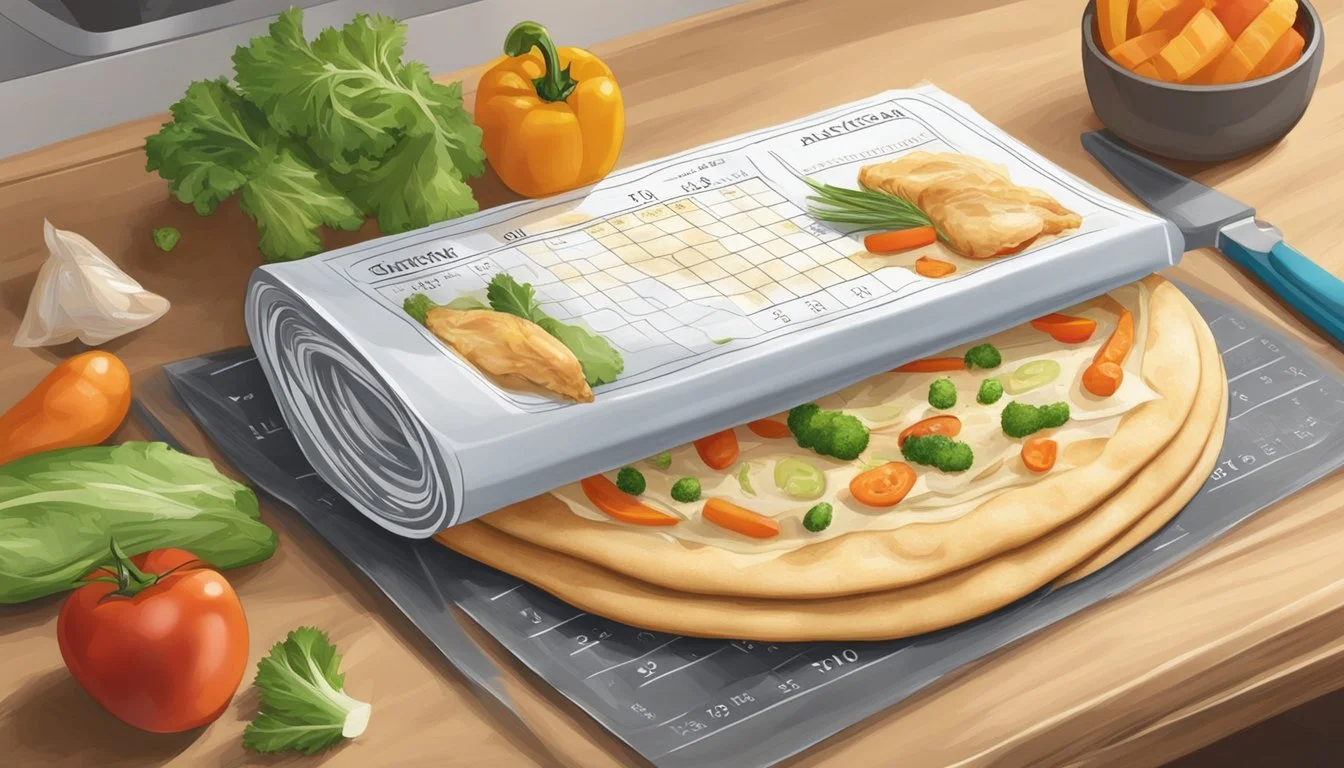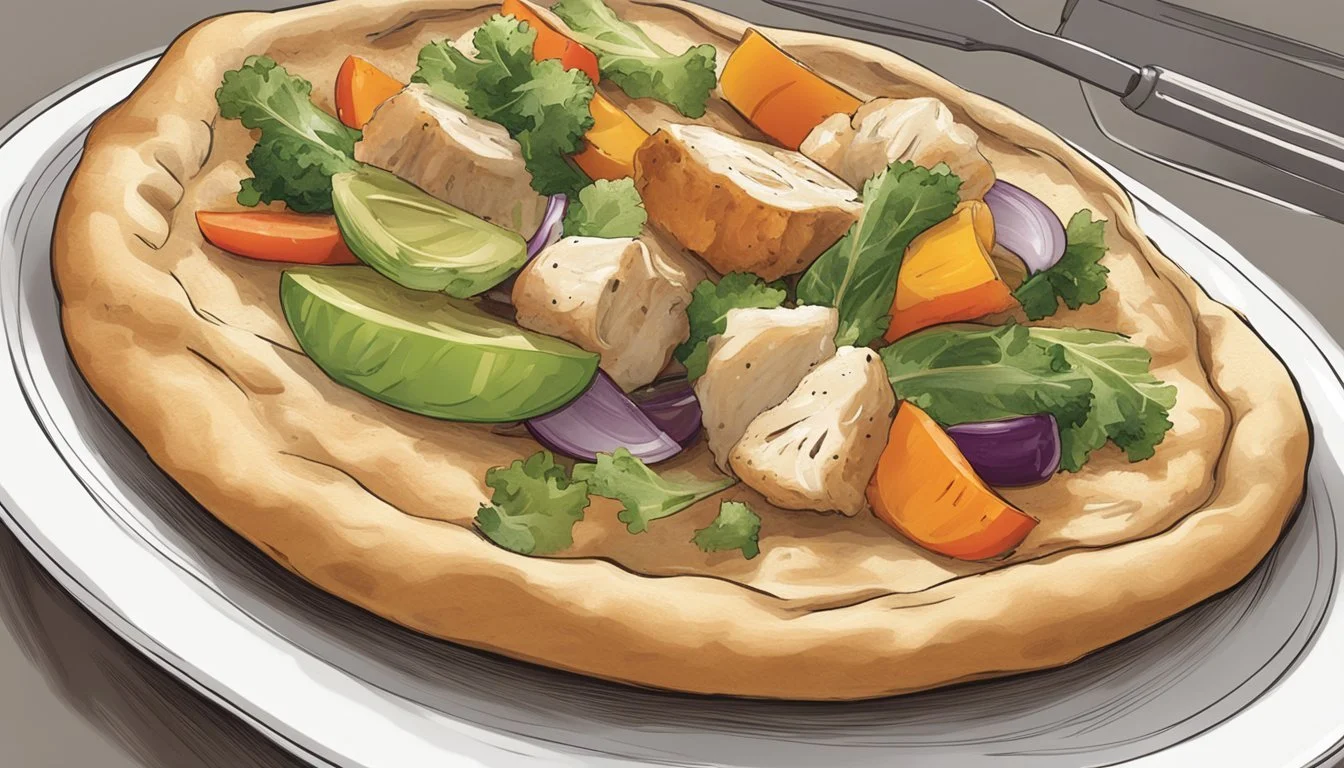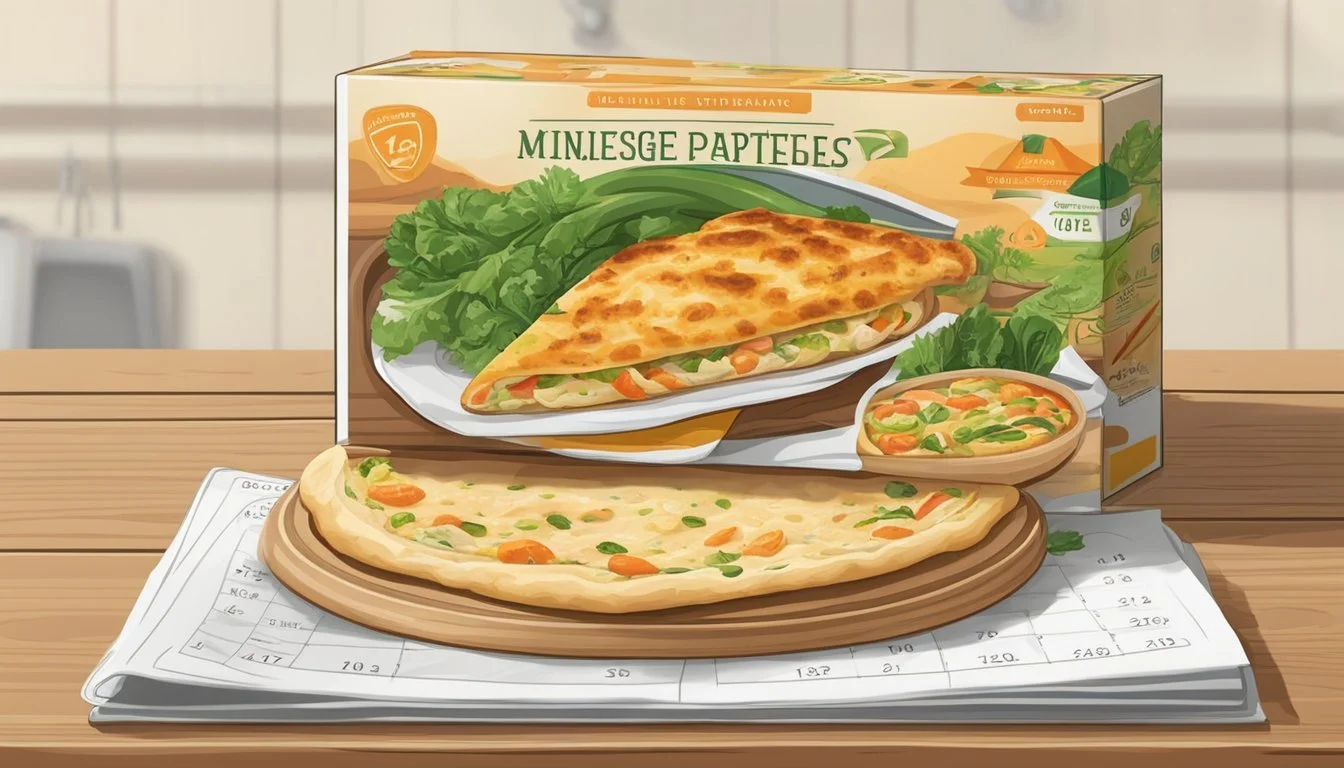How Long Does Chicken and Vegetable Flatbread Last?
Storage Tips and Guidelines
Understanding how long chicken and vegetable flatbread lasts can significantly impact food quality and safety. A homemade chicken and vegetable flatbread can remain fresh for up to 3-4 days when stored correctly in the refrigerator. Being proactive in monitoring this time frame helps in ensuring the flatbread retains its flavors and textures.
Storage techniques also play a crucial role in maintaining the quality of the flatbread. Properly sealing it with plastic wrap or an airtight container will help prevent moisture loss and reduce the risk of bacterial contamination. This approach not only extends shelf life but also keeps the flatbread tasting delicious.
If you plan to store the flatbread for a more extended period, freezing is an option. When frozen, chicken and vegetable flatbread can last up to 2 months without losing much quality. Storing portions in vacuum-sealed bags can further enhance shelf life, making meal prep easier while ensuring food safety.
Understanding Flatbread Essentials
Flatbread is a versatile type of bread that comes in various styles and flavors, each with its unique texture and use. Whether homemade or store-bought, understanding the key characteristics of flatbread can enhance both storage and culinary use.
Defining Flatbread
Flatbread is a type of bread that is typically flat and thin. It can be unleavened or slightly leavened and is often used as a base for various dishes or as a standalone snack. Common recipes might contain simple ingredients such as flour, water, salt, and sometimes yeast.
The defining characteristic of flatbread is its simplicity and speed in preparation compared to traditional bread. It is often cooked on a stovetop, grill, or in an oven.
Common Flatbread Varieties
There are numerous varieties of flatbread, each with distinct flavors and textures. Naan is a soft, leavened flatbread frequently served with Indian dishes. Tortillas are thin and typically made from flour or corn, common in Mexican cuisine.
Pita bread is another type, known for its pocket that makes it ideal for stuffing with various fillings. Pizza dough can also be considered a type of flatbread, used as a base for making pizza with different toppings.
Homemade vs. Store-Bought Flatbread
Opting for homemade flatbread allows for customization in thickness, flavor, and ingredients. It provides the flexibility to create healthier versions by using whole grains or reducing salt content. Freshly made flatbread often has a superior texture and flavor compared to pre-packaged varieties.
Store-bought flatbread, on the other hand, offers convenience and longer shelf life due to preservatives. It can be quickly revived using a skillet or oven to achieve a fresh-off-the-grill quality. Shelf life can vary depending on the packaging and preservatives used, but properly storing it can extend its usability.
Nutritional Components
Understanding the nutritional components of chicken and vegetable flatbread provides insights into how this dish contributes to a balanced diet. Key elements include protein sources from meats and dairy, the benefits of vegetable additions, and tips for optimizing nutrient retention.
Protein Sources in Flatbread
Chicken, being a lean poultry meat, is a primary protein source in flatbread. It is low in fat and high in essential amino acids. Parmesan and mozzarella cheese add additional protein while also contributing fats and calcium.
Eggs can also be incorporated into the flatbread, boosting its protein content and adding essential vitamins like B12. Other meat options like pork, beef, fish, and shrimp provide variety in protein intake and can be included based on dietary preferences.
Vegetable Additions to Flatbread
Vegetables such as tomatoes, spinach, peppers, and onions enhance the nutritional profile of flatbread by adding fiber, vitamins, and minerals. For instance, tomatoes are rich in Vitamin C and antioxidants like lycopene. Spinach offers iron and Vitamin K, while bell peppers provide a range of B vitamins and folate.
Using olive oil to cook vegetables or drizzle over the flatbread not only adds flavor but also healthy monounsaturated fats, which benefit heart health. Including a variety of vegetables ensures a balanced intake of nutrients and enhances the dish's overall health value.
Optimizing Nutrient Retention
To retain the nutrients in chicken and vegetables, cooking methods matter. Grilling or roasting chicken at appropriate temperatures can maintain its protein content while minimizing fat loss.
For vegetables, quick cooking methods like steaming or sautéing in olive oil can help preserve vitamins and minerals. Avoiding high heat and prolonged cooking times is crucial, as it can lead to nutrient degradation.
Cheese should be added last during cooking to prevent over-melting and loss of nutrient density, while fresh herbs can be sprinkled after baking to add flavor and additional nutrients without losing their potency.
Preparing Your Chicken and Vegetable Flatbread
Preparing chicken and vegetable flatbread involves choosing the freshest ingredients, mastering simple preparation techniques, and expertly combining elements to maximize flavor and texture.
Selecting Ingredients for Optimal Freshness
Fresh ingredients enhance both flavor and texture. Fresh chicken should be firm and free of any off odor. Vegetables like bell peppers, red onions, and zucchini need to be crisp. Choose herbs such as basil and other fresh herbs for a burst of flavor.
High-quality olive oil is essential for sautéing the chicken and vegetables. Select goat cheese or mozzarella for a creamy texture. Ensure that all ingredients, including garlic, salt, and pepper, are of high quality to elevate your flatbread.
Flatbread Preparation Techniques
The base of a good chicken and vegetable flatbread is the dough. Start by mixing flour, baking powder, and salt. Add water and olive oil to form a dough. Let it rest before rolling it out. You can also use store-bought flatbread for convenience.
Preheat your oven to 450°F. Spread the dough on a baking sheet or pizza pan. Brush it with olive oil and pre-bake for a few minutes to achieve a crispy texture. This step also prevents the flatbread from getting soggy when topped with other ingredients.
Combining Ingredients for Enhanced Flavor
Heat olive oil in a skillet and add cooked chicken, garlic, and vegetables. Season with salt and red pepper flakes. Sauté until the vegetables are tender and the chicken is warm. Press or roll pizza dough into a 9×13 inch rectangle or your desired shape.
Spread a layer of marinara sauce or crème fraiche on the dough. Evenly distribute the sautéed chicken and vegetables on top. Sprinkle generously with mozzarella and parmesan cheese or add crumbled goat cheese. Bake for 10-12 minutes until the cheese is melted and bubbly.
A finishing touch of fresh basil leaves or other herbs can add a bright flavor. Let the flatbread cool slightly before slicing and serving. Enjoy your homemade chicken and vegetable flatbread with an enhanced combination of flavors and textures.
Storage Considerations
Proper storage of chicken and vegetable flatbread is essential to maintain its freshness and safety. Below, explore the best practices for freezing, refrigerating, and identifying spoilage.
Freezing Chicken and Vegetable Flatbread
Freezing is an effective way to extend the life of chicken and vegetable flatbread. To ensure optimal quality, wrap the flatbread tightly in aluminum foil or plastic wrap before placing it in a freezer-safe bag.
Temperature is crucial; set the freezer to 0°F (-18°C) or lower. This minimizes the risk of bacteria growth and freezer burn. Label the packages with the date to keep track and consume within three months for the best flavor and texture.
Refrigeration Best Practices
When refrigerating, store chicken and vegetable flatbread in an airtight container or wrap it in plastic wrap or aluminum foil. This prevents moisture loss and contamination.
Keep the fridge at 40°F (4°C) or lower to inhibit bacterial growth. According to FoodSafety.gov, cooked chicken can be safely refrigerated for up to four days. Monitor the flatbread for signs of spoilage during this period.
Indicators of Spoilage
Recognizing spoilage signs is essential to ensure the flatbread remains safe to eat. Look for changes in color, such as darkening or the presence of mold. An off-putting or sour smell is another clear indicator of spoilage.
Also, be aware of changes in texture or the presence of slimy residue. If any spoilage indicators are present, discard the flatbread immediately to avoid foodborne illness.
By following these guidelines, you can safely store chicken and vegetable flatbread, ensuring its quality and safety over time.
Preservation Methods
Proper preservation methods can significantly extend the shelf life of chicken and vegetable flatbread. Key strategies include vacuum sealing, choosing the right packaging, and avoiding contamination.
Vacuum Sealing for Longevity
Vacuum sealing is highly effective for extending the life of chicken and vegetable flatbread. By removing air, it minimizes the risk of bacterial growth and freezer burn. Vacuum-sealed flatbreads can last up to several months when stored in the freezer.
The absence of oxygen helps maintain texture and taste. For optimal results, ensures that the flatbread is cool before sealing. Use a vacuum sealer machine to tightly seal the flatbread in specialized bags.
The Role of Packaging in Preservation
The choice of packaging plays a vital role in preserving flatbread. Options include plastic wrap, aluminum foil, airtight containers, and freezer bags. Plastic wrap and aluminum foil are good for short-term storage, keeping moisture out and preventing dryness.
For longer-term storage, airtight containers and freezer bags are more reliable. These options provide a stronger barrier against external elements. Vacuum-sealed freezer bags are especially effective when it comes to long-term preservation.
Avoiding Contamination
Preventing contamination is crucial for maintaining the quality of chicken and vegetable flatbread. Ensure all surfaces and utensils are clean before use. Wash hands thoroughly to avoid transferring bacteria to the food.
Store flatbread away from raw meats and other potential contaminants. Opt for airtight containers or vacuum-sealing methods to keep the flatbread free from germs. Proper handling and storage minimize the risk of spoilage and food-borne illnesses.
Make sure to label the packaging with the date before storing. This practice helps in tracking usage timelines and maintaining freshness.
Safety and Quality Assurance
Ensuring the safety and quality of your chicken and vegetable flatbread involves following proper food safety guidelines, inspecting for freshness, and maintaining a safe cooking environment. The following information will help you keep your meals safe and enjoyable.
Understanding Food Safety Guidelines
Adhering to food safety guidelines is crucial for preventing foodborne illnesses. The USDA recommends storing cooked chicken at or below 40°F to inhibit bacterial growth. Chicken should be consumed within 3 to 4 days after cooking.
Vegetables used in the flatbread should also be stored properly. Wash all vegetables thoroughly before use. Foodsafety.gov suggests storing cut, perishable fruits and vegetables in the refrigerator at 40°F or below.
Inspection for Quality and Freshness
Regular inspection for quality and freshness can help prevent health issues. Look for common signs of spoilage in chicken such as slimy texture and off-putting odor. The appearance should be consistent and free from discoloration.
Vegetables should appear crisp and vibrant. Wilted or slimy vegetables should be discarded immediately. Ensuring both components of the flatbread are fresh not only maintains quality but also reduces the risk of bacterial contamination.
Maintaining a Safe Cooking Environment
A safe cooking environment is essential for preparing healthy meals. Clean all surfaces and utensils with hot, soapy water before and after handling raw chicken and vegetables. Cook chicken to an internal temperature of 165°F to kill harmful bacteria.
Avoid cross-contamination by using separate cutting boards for meats and vegetables. Following these practices helps ensure that your chicken and vegetable flatbread remains safe to eat while retaining its high quality and nutritional value.
Maximizing Shelf Life
To ensure chicken and vegetable flatbread remains fresh for as long as possible, it is crucial to follow proper storage practices, handle leftovers correctly, and implement effective labeling and rotation strategies.
Tips for Extending Freshness
Store the flatbread in airtight containers to prevent exposure to moisture and air, which can cause spoilage. Make sure the refrigerator temperature is set at or below 40°F (4°C) as recommended by the USDA.
Avoid storing the flatbread near the door where temperatures fluctuate. Use packaging materials such as plastic wraps or zip-top bags to protect individual portions. If freezing, ensure the flatbread is wrapped tightly to prevent frost and freezer burn.
Handling Leftovers
When dealing with leftovers, always refrigerate the flatbread promptly, ideally within two hours of cooking. If it has been left out longer, it should be discarded to avoid the risk of foodborne illness.
Cut the flatbread into smaller portions for easier storage and quicker cooling. It's best to consume refrigerated leftovers within 3-4 days to ensure safety and freshness. For extended shelf life, consider freezing portions that won't be eaten within this time frame.
Labeling and Rotation Strategies
Implement a first-in, first-out (FIFO) system to use older products before newer ones. Clearly label containers with the date of preparation using sticky notes or labels. This helps in tracking the freshness and avoiding confusion.
When purchasing flatbread or ingredients from the grocery store, check the sale dates and select items with the furthest dates out for maximum longevity. Combining these strategies ensures that food is consumed while it is still fresh, maintaining quality and taste.

